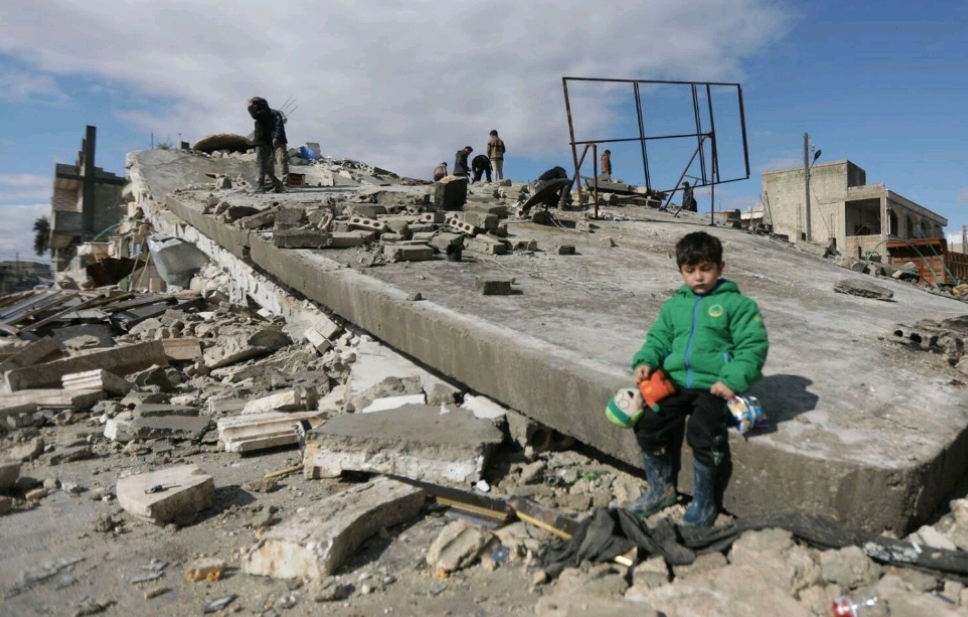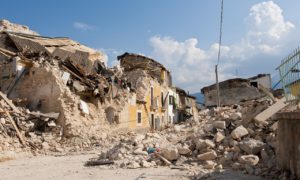Turkey-Syria Earthquake: An Early Warning for Preparedness

Disasters are sudden events that disrupt the functioning of the community having consequences in the short term and long term basis.
The scale of devastation brought forwarded by the disaster for the locality is often beyond the coping mechanism of the community for which they need external assistance to come to term with life.
This is quite evident during the Turkey-Syria earthquake in February 2023.
An earthquake of magnitude 7.8 on Richter scale ravished South-Central Turkey and North West Syria leading to descendance of many high-rise buildings, breaking down of the roads and dismantlement of the transport system in the region.
Instant tumbling down of the buildings owing to tectonic plate movement underneath the crust of earth, translated into many lives being caught under the rubble of concrete heavy materials.
The prolonged wail from underneath the palpable debris were generating a sense of acute misery in the surroundings.
The need for humanitarian aid that the earthquake generated in Turkey was unparallel in the recent history.
The priority response in such a massive earthquake scenario was search and rescue operations that the world responded by sending professionals to do the search operations along with the needed equipment and medical professionals.
The experts estimates that the severity of earth quake might lead to a direct death toll of more than twenty four thousand in the region leaving aside countless injured, both physically and emotionally.
At the household level the calamitous incident changes the course of life of the family members, pushing and pulling them in different directions due to sudden changes in the socio-economic reality of the family.
For the economically vulnerable section of the society who are uninsured against the emergency situation due to varieties of reasons, disasters prove to be catastrophic for them.
The loss of near and dear ones, meager infrastructure base and failure to avail various restoration opportunities due to their low voice and bargaining skill further marginalize the poor disaster survivors.
It made the individuals opt for certain choices that ultimately erode their opportunity to break down the poverty trap condition for the family and in return pushed inside to the grapple stronghold of miseries.
The impact of high magnitude natural disaster on survivor’s life is in a different mode other than macro-economic perspective.
It gets translated into sudden loss of resources and relations, generating shocks, disbelief among the ones spared by that sever calamity.
The collapse of ground in Turkey and Syria witnessed such emotions among the one’s left behind by the tragedy.
The sense of helplessness, frustration, flashbacks, guilt, fear and many such emotions caught hold the victims giving them the sense of exhaustion and despair.
The repeated tremors followed by the first earth quake generated a sense of fear and anger among the victims that would last with them for many days to come making it difficult to accept the new reality.
The kind of frustration and trauma that the seismic holocaust of Turkey brought in the life of locals will remain with the victims for a longer period of time, complicating the whole spectrum of their physical and mental health as well as their productivity.
Geographically Turkey is placed in a high Sensitive Seismographic Zone of Category V because of its location on the Anatolian plate, created by the intersection of East and North Anatolian faults.
Majority of the earthquakes in Turkey happens due to the North Anatolian fault that runs across the country’s northern shore and intersect the East Anatolian fault to the Aegean Sea.
The movements and frictions in these two gigantic tectonic plates make Turkey one of the most seismically active nation of the world.
Inevitability and unpredictability nature of disaster is a well-known phenomenon but the impact of geographic factor induced disaster could be avoided to a certain degree by the preparedness activities.
Disaster resilient appropriate infrastructure, awareness building, precautionary measures in case of strike of the natural hazard, formation of task force to respond to the emergency situation are certain vital steps to reduce the risk of geographic specific natural hazardous condition.
Continuous awareness building regarding possible hazardous events keeps the probability of major loss at a bay and protects the citizens from casualties, physical, emotional and resources loss.
In the present day context, the happenings in Turkey is indicating that the human civilization is not only vulnerable to the sudden atmospheric changes expressing itself in the form of climate changes but also equally vulnerable to the tectonic plate movements underneath the earth’s crust.
The administrative systems of various regions should put emphasis on these vulnerability aspects of the localities and focus on the preparedness activities to reduce the human sufferings on this planet.








































